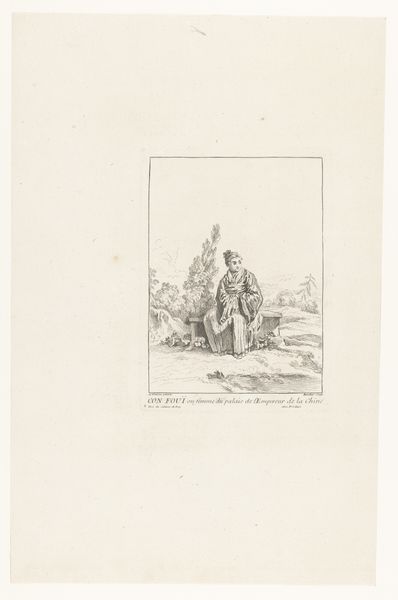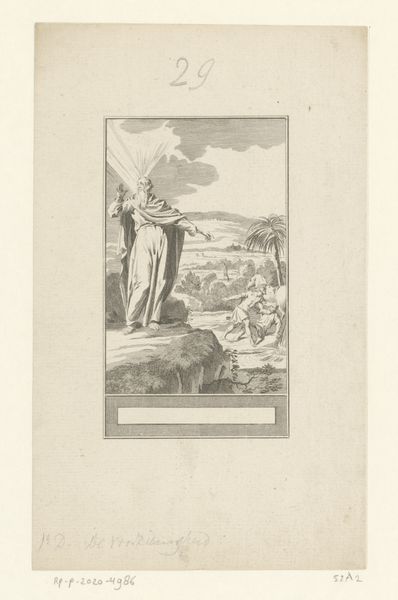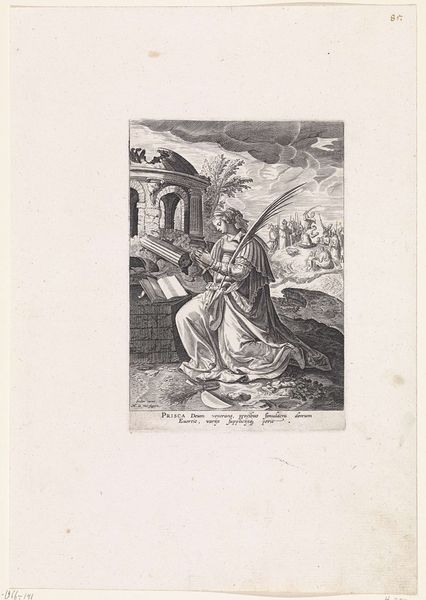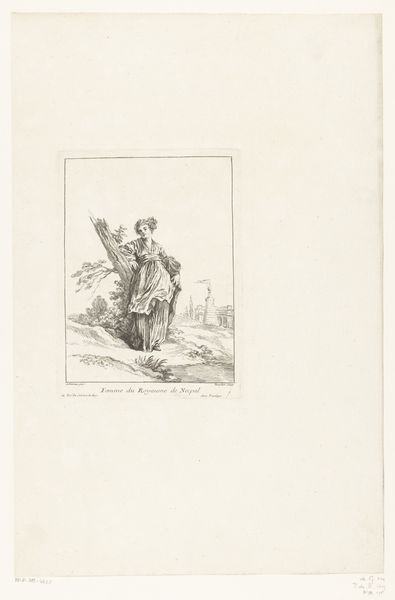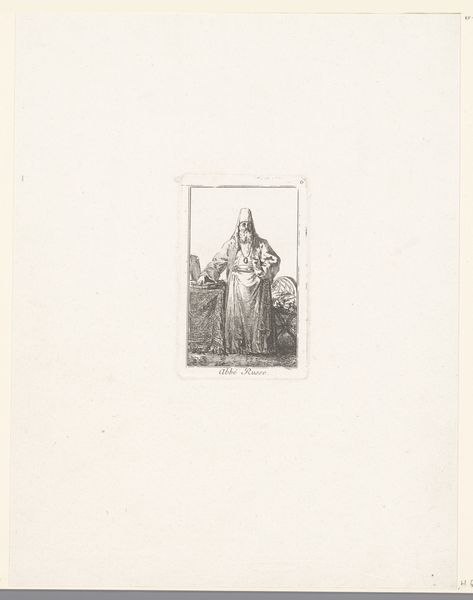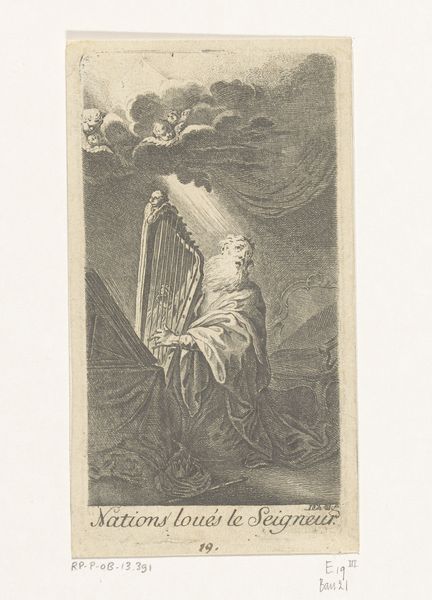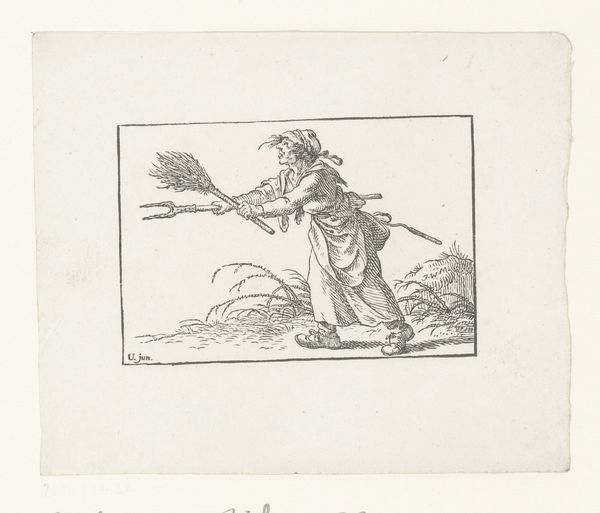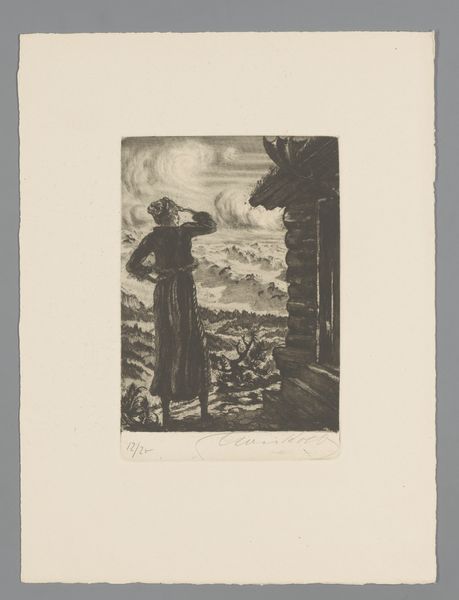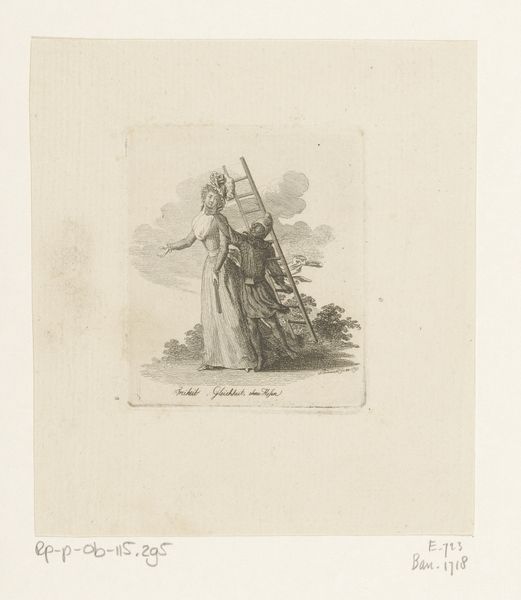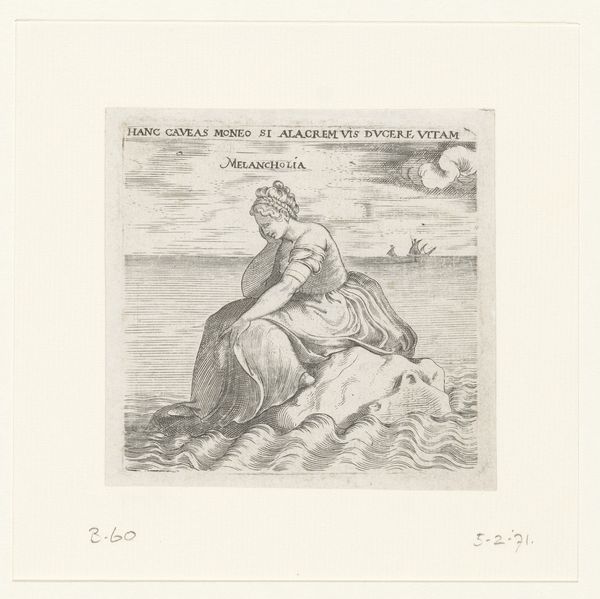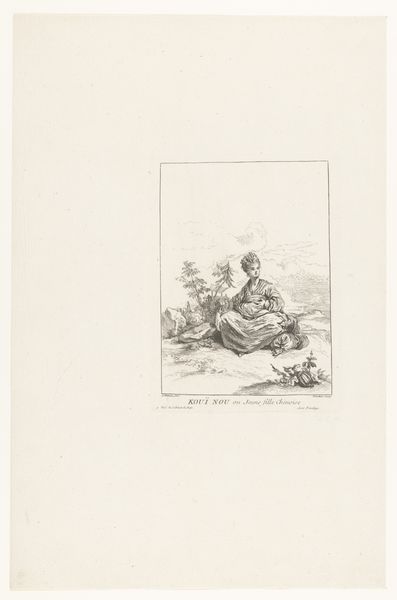
print, engraving
# print
#
landscape
#
figuration
#
line
#
history-painting
#
italian-renaissance
#
engraving
Dimensions: height 76 mm, width 77 mm
Copyright: Rijks Museum: Open Domain
Curator: Enea Vico's engraving, "Ontrouw," created sometime between 1533 and 1567, presents us with a complex visual allegory. What's your first impression? Editor: Stark. The landscape feels barren despite the meticulous detail. It's all linear, incredibly controlled—even the implied texture of the drapery seems to highlight the artifice of the engraving process itself. Curator: Precisely. Notice the composition, bisected almost rigidly. On one side, a suggestion of a town, ordered and contained; on the other, an expansive wilderness punctuated by a sort of... sunburst, yes? The figure stands at this liminal space. Editor: Right. It feels staged. Considering Vico's engraving technique, you know the physicality of crafting this plate – the labor intensive action of manually etching to then produce many. Does this speak to a certain dissemination of untruth? The ability to reproduce falsehoods endlessly? Curator: A compelling observation! Certainly, the very nature of printmaking as a reproductive medium adds a layer of meaning. This artwork being a form of dissemination opens dialogues to how the art of “lying” itself could be shared amongst varied viewers. The text framing the figure further invites that discussion. Editor: Given the text above – something about a 'pleasant face concealing ugliness', I read the figure as duplicity itself, the print offering itself almost as a warning. Curator: I concur. We can consider the figure's dress, Roman in style, gesturing perhaps to an appeal to classical authority to lend falsehood a veneer of legitimacy. What do you make of her two faces? That detail, perhaps, unearths its thematic emphasis and what untruth presents as a concept. Editor: A key point. From a materialist perspective, this very duality invites considering the human labor involved, but also the economic structures that supported printmaking – who was buying these images, and what role did they play in constructing and disseminating "untruths"? Curator: It allows for a very intricate discourse, doesn't it? We started from its lines, form, and even now, are discussing dissemination of falsehood. This work's intrinsic structure yields the beginning to conversations regarding materiality and contextualization. Editor: Absolutely. Vico's “Ontrouw" encourages viewers to think critically about art, truth, and their entanglement. It remains deeply relevant.
Comments
No comments
Be the first to comment and join the conversation on the ultimate creative platform.

